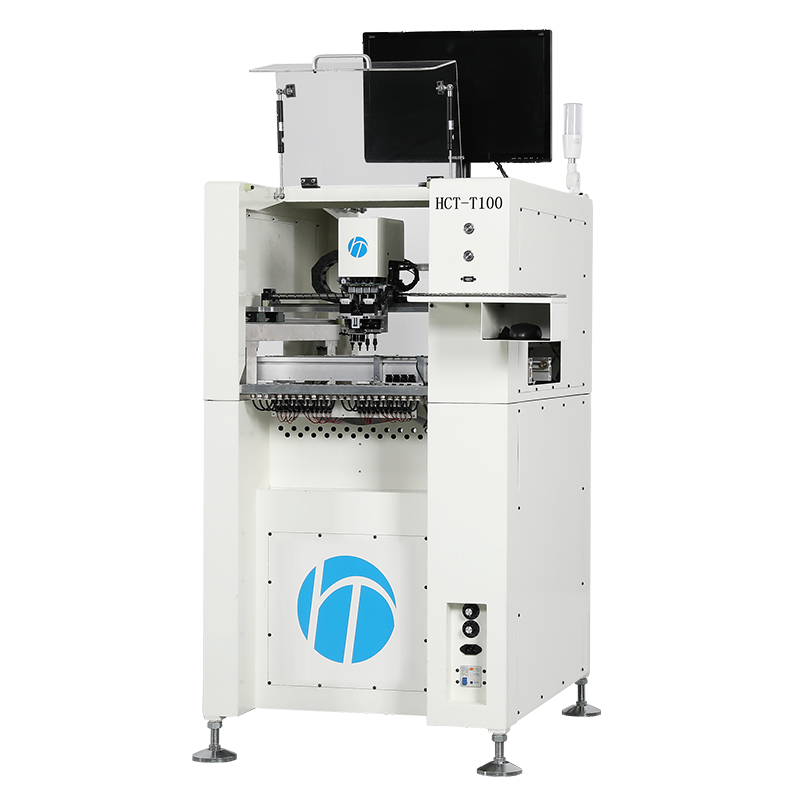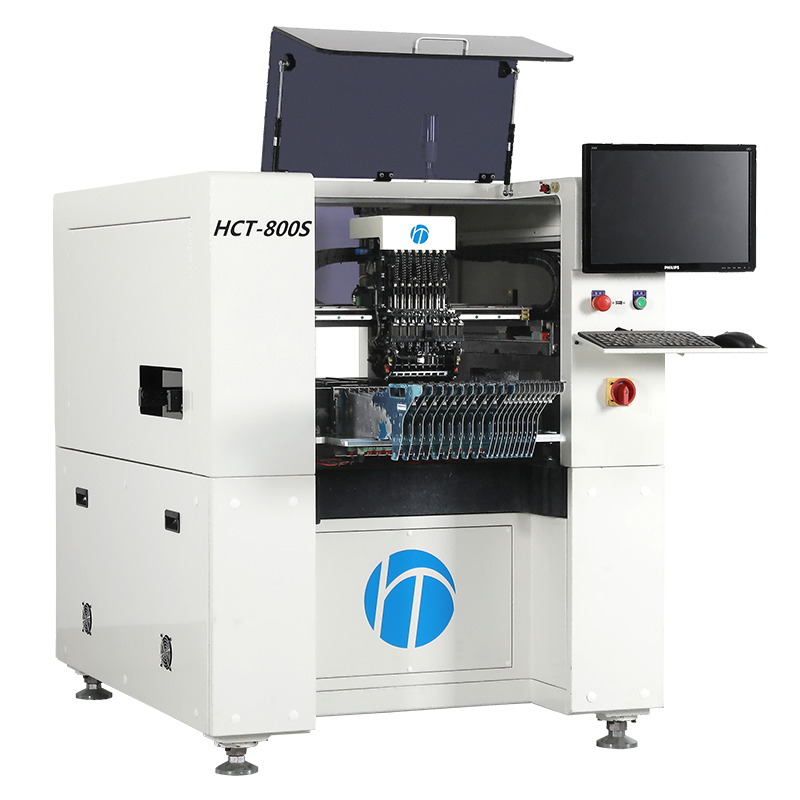E-Mail-Formatfehler
emailCannotEmpty
emailDoesExist
pwdLetterLimtTip
inconsistentPwd
pwdLetterLimtTip
inconsistentPwd


SMT Equipment for Sale: The Ultimate Guide for Your Manufacturing Needs
When it comes to modern manufacturing, Surface Mount Technology (SMT) plays a critical role. The efficiency, precision, and versatility of SMT equipment make it indispensable for assembling electronic circuits. If you're in the market for SMT equipment for sale, this comprehensive guide will help you understand the various types of SMT machines available, their applications, and how to choose the best equipment to meet your specific needs.
Understanding SMT Equipment
SMT equipment refers to machines used in the process of creating electronic circuits by mounting components directly onto the surface of printed circuit boards (PCBs). This technology contrasts with traditional through-hole technology, where components are inserted into holes drilled in the PCB.
Types of SMT Equipment
- Pick and Place Machines
- Reflow Ovens
- Screen Printers
- Solder Paste Inspection (SPI) Machines
- Automated Optical Inspection (AOI) Machines
Each type of machine plays a unique role in the SMT assembly line, contributing to the overall efficiency and quality of the manufacturing process.
Benefits of Using SMT Equipment
SMT equipment offers numerous benefits, including:
Increased Production Speed: SMT processes are faster than traditional methods, allowing for high-volume production.
Improved Precision: Advanced SMT machines offer high precision, ensuring components are placed accurately.
Reduced Labor Costs: Automation reduces the need for manual labor, lowering overall production costs.
Enhanced Reliability: SMT components are less prone to mechanical failure, leading to more reliable products.
Factors to Consider When Purchasing SMT Equipment
Quality and Reliability
When looking for SMT equipment for sale, it's crucial to consider the quality and reliability of the machines. High quality multifunctional SMT equipment can significantly enhance your production capabilities by offering reliable performance and longevity.
Compatibility
Ensure that the SMT equipment you choose is compatible with your existing manufacturing setup. This includes compatibility with your PCBs, components, and other machinery in your production line.
Budget
Your budget will play a significant role in determining the type and quality of SMT equipment you can purchase. While it's important to stay within budget, investing in high-quality equipment can save money in the long run by reducing downtime and maintenance costs.
Top SMT Equipment for Sale
Pick and Place Machines
Pick and place machines are the heart of any SMT production line. These machines automate the process of placing components onto the PCB with high speed and precision.
High-End Models: These offer advanced features like vision systems for component alignment, high-speed placement, and multi-functional capabilities.
Mid-Range Models: Suitable for medium-sized operations, offering a balance between cost and performance.
Entry-Level Models: Ideal for small businesses or prototyping, providing basic functionality at a lower cost.
Reflow Ovens
Reflow ovens are used to solder the components onto the PCB. The oven heats the board to a temperature that melts the solder paste, securing the components in place.
Convection Ovens: Use heated air to solder the components, providing even heat distribution.
Vapor Phase Ovens: Use vaporized liquids to transfer heat, offering precise temperature control.
Screen Printers
Screen printers apply solder paste to the PCB. The accuracy of this process is critical to ensuring proper component placement and soldering.
Automatic Screen Printers: Offer high precision and speed, suitable for large-scale production.
Manual Screen Printers: More cost-effective and suitable for smaller operations.
Solder Paste Inspection (SPI) Machines
SPI machines inspect the solder paste application to ensure it meets the required specifications. This step is crucial for preventing defects in the final product.
3D SPI Machines: Provide detailed inspections using 3D imaging technology.
2D SPI Machines: Offer basic inspection capabilities, suitable for simpler applications.
Automated Optical Inspection (AOI) Machines
AOI machines inspect the assembled PCBs for defects such as misplaced components, soldering issues, and other anomalies.
Inline AOI Machines: Integrated into the production line for continuous inspection.
Offline AOI Machines: Used for batch inspections, offering flexibility in production.
How to Choose the Right SMT Equipment
Define Your Requirements
Start by defining your specific manufacturing requirements. Consider factors such as production volume, PCB complexity, and the types of components you will be using.
Research and Compare
Research different models and brands of SMT equipment for sale. Compare their features, performance, and prices to find the best fit for your needs.
Consult with Experts
Consulting with industry experts or equipment suppliers can provide valuable insights into the best options for your specific requirements. They can also offer advice on optimizing your production line.
Consider Future Needs
When purchasing SMT equipment, it's essential to consider your future needs. Investing in scalable and upgradable equipment can help accommodate future growth and technological advancements.
The Importance of Maintenance and Support
Proper maintenance and support are crucial for ensuring the longevity and performance of your SMT equipment. Regular maintenance can prevent costly downtime and extend the life of your machines.
Scheduled Maintenance
Implement a scheduled maintenance plan to keep your equipment in optimal condition. This includes regular inspections, cleaning, and replacing worn-out parts.
Technical Support
Ensure that the manufacturer or supplier offers reliable technical support. Access to prompt and knowledgeable support can quickly resolve any issues that arise, minimizing downtime.
Innovations in SMT Equipment
The SMT industry is continually evolving, with new innovations enhancing the capabilities and efficiency of SMT equipment. Some recent advancements include:
Artificial Intelligence (AI) and Machine Learning
AI and machine learning are being integrated into SMT equipment to improve precision and efficiency. These technologies can optimize placement algorithms, predict maintenance needs, and enhance quality control processes.
Industry 4.0
The integration of Industry 4.0 technologies, such as the Internet of Things (IoT) and smart manufacturing, is transforming the SMT industry. These technologies enable real-time monitoring, data analysis, and automation, leading to more efficient and flexible production processes.
Advanced Materials
The development of advanced materials, such as high-performance solder pastes and adhesives, is improving the reliability and performance of SMT assemblies. These materials offer better thermal and mechanical properties, enhancing the overall quality of electronic products.
Case Studies: Successful Implementation of SMT Equipment
Case Study 1: A Leading Electronics Manufacturer
A leading electronics manufacturer invested in high quality multifunctional SMT equipment to enhance their production capabilities. By upgrading their pick and place machines and reflow ovens, they achieved a 30% increase in production speed and a significant reduction in defect rates. The integration of advanced AOI and SPI machines further improved their quality control processes, resulting in higher customer satisfaction and increased market share.
Case Study 2: A Small Business Expansion
A small electronics assembly business expanded their operations by purchasing entry-level SMT equipment for sale. This investment allowed them to transition from manual assembly to automated production, reducing labor costs and increasing output. The scalability of their new equipment also enabled them to take on larger contracts and grow their business.
Conclusion: Investing in the Right SMT Equipment
Choosing the right SMT equipment for sale is a critical decision that can significantly impact your manufacturing efficiency, product quality, and overall success. By understanding the different types of SMT machines, their applications, and the factors to consider when purchasing, you can make an informed decision that meets your specific needs.
Whether you're a small business looking to upgrade your production capabilities or a large manufacturer seeking to enhance your existing operations, investing in high quality SMT equipment can provide the reliability and performance required to stay competitive in the fast-paced electronics industry.
By staying informed about the latest innovations and maintaining your equipment properly, you can ensure that your SMT production line operates at peak efficiency, delivering high-quality products to your customers.

